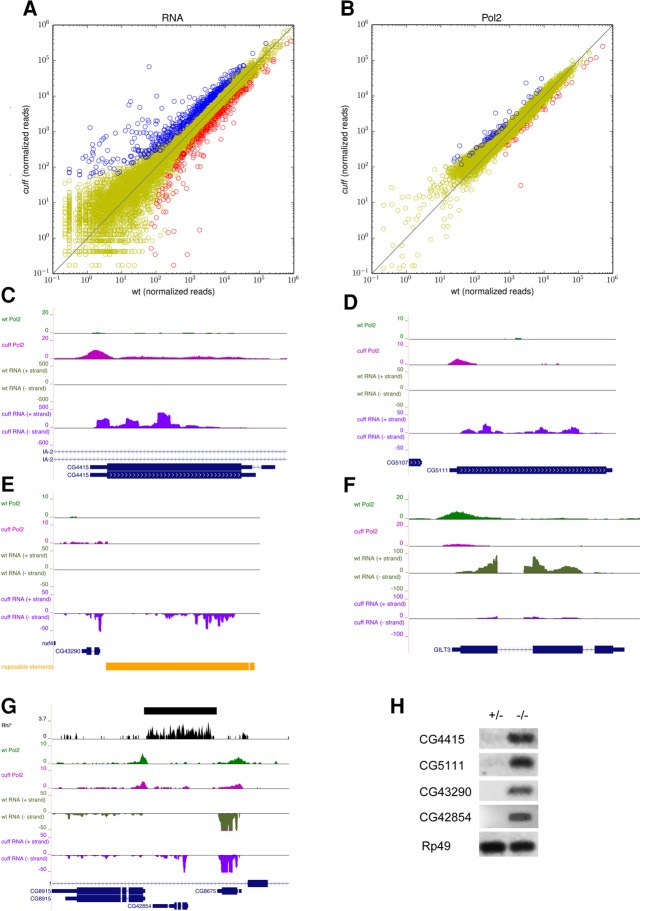FIGURE 5.
Protein-coding genes are differentially expressed in the absence of a functional Cuff protein. (A) Scatter plot displaying the impact of mutations in cuff on the expression levels of protein-coding genes as per RNA-seq. Genes that are up-regulated (blue dots), down-regulated (red dots), and not significantly affected (yellow dots) in the cuff mutant are displayed. Shown on x- and y-axes are consensus normalized read counts over replicates. (B) Scatter plot displaying changes in RNA Pol2 occupancy at protein-coding genes as per ChIP-seq assays. Genes characterized by increased (blue dots) and decreased (red dots) RNA Pol2 occupancy in the cuff mutant are reported. Yellow dots indicate genes that display apparently unaffected RNA Pol2 occupancy. Shown on x- and y-axes are normalized consensus read counts over replicates. (C–F) RNA Pol2 in wild-type (green) and RNA Pol2 in cuff mutant (magenta) ChIP-seq profiles along selected protein-coding genes. RNA-seq profiles in wild-type (dark green) and cuff mutant (purple) are also shown. (G) Rhi (black), RNA Pol2 in wild-type (green), and RNA Pol2 in cuff mutant (magenta) ChIP-seq profiles along CG42854. Reproducible Rhi binding is shown by a solid line in a separate track. RNA-seq profiles in wild-type (dark green) and cuff mutant (purple) are also shown. (H) RT-PCR in wild-type and cuff mutant ovaries with primers specific for the CG4415, CG5111, CG43290, CG42854, and the control rp49.

